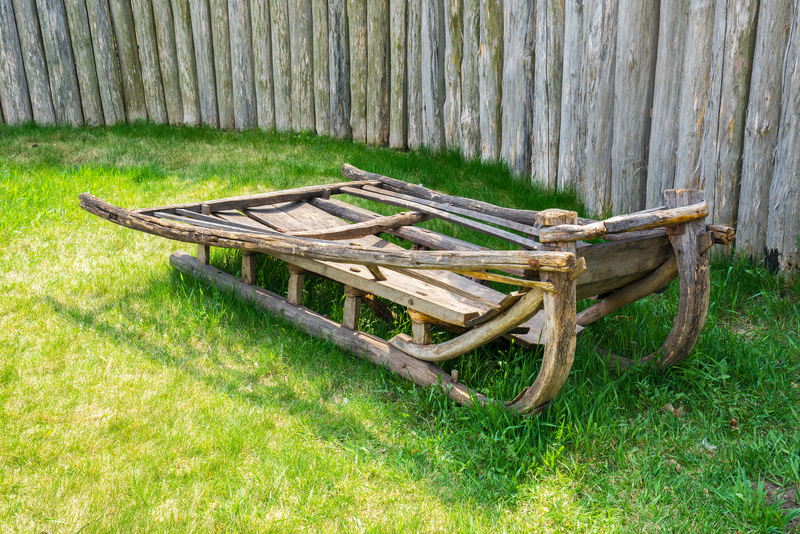Effective Kitchen Packing: Best Practices
Posted on 03/01/2025
Packing up a kitchen can often be one of the most daunting tasks when moving to a new home. The kitchen is filled with fragile items, odd-shaped utensils, and essential appliances that need careful handling. Properly packing your kitchen ensures your items are safely transported and helps you quickly set up your new space. Here, we'll discuss effective kitchen packing best practices to help make your move smoother and more efficient.
1. Start with a Plan
Before diving into the packing process, it's essential to have a plan. Start by sorting through your items and deciding what you need to keep, donate, or discard. Decluttering before a move saves you from the hassle of packing and reduces the space taken up in your moving boxes.

2. Gather the Right Supplies
Having the proper supplies is crucial for an effective packing process. Make sure to gather:
- Sturdy moving boxes in various sizes
- Bubble wrap and packing paper
- Dish pack inserts
- Strong packing tape
- Markers for labeling
- Plastic wrap
- Dish pack kits (for extra protection)
3. Prioritize Essential Items
When packing up your kitchen, create a box of essentials that you'll need immediately after the move. This box should include things like:
- A few plates and glasses
- Essential cooking utensils
- Coffee maker and mugs
- Basic spices and cooking oils
- Dish soap and towels
Make sure to label this box clearly so it can be easily identified and unpacked first.
4. Packing Plates and Glassware
Plates and glassware are among the most fragile items in a kitchen, and they require special care.
Plates
- Use packing paper to wrap each plate individually.
- Place a layer of crumpled paper or bubble wrap at the bottom of your box.
- Stack plates vertically, not horizontally, and add padding between each plate.
- Fill any empty spaces with padding to prevent movement during transportation.
Glasses
- Wrap each glass individually with packing paper or bubble wrap.
- Stuff the inside of the glass with paper for added cushioning.
- Use dish pack inserts to separate and secure each glass.
5. Secure Your Pots and Pans
Pots and pans are easier to pack but still require attention to avoid dents and scratches.
- Stack pots and pans inside each other, using paper between each layer.
- Place smaller items inside larger pots to save space.
- Wrap lids separately in paper or bubble wrap and pack them vertically to prevent damage.
6. Carefully Pack Small Appliances
Small appliances like toasters, blenders, and mixers need to be packed to avoid damage.
- Remove any detachable parts and wrap each part individually.
- Wrap the main body of the appliance and secure the cord to prevent tangling.
- Use the original packaging if possible, as it offers the best fit and protection.
- Place the appliance in a sturdy box and fill any gaps with padding paper.
7. Label Everything Clearly
Proper labeling is key to an organized move and easy unpacking. Clearly mark each box with its contents and the room it belongs to. Add "Fragile" labels to boxes containing breakable items. Consider creating an inventory list to keep track of everything.
8. Don't Forget Food Items
For perishable food items, plan ahead and methodically use up what you can before the move. Pack non-perishable items such as canned goods, spices, and dry ingredients in sturdy boxes and label them accordingly.
For refrigerated or frozen items that you want to transport, use cooler bags and ice packs to keep them fresh during the move.
9. Utilize Original Packaging
Whenever possible, use the original packaging for appliances and other kitchen items as it's designed specifically for those items. Original packaging offers the best protection, and many appliance boxes come with custom molds or padding.

10. Seek Professional Help if Needed
If the task feels overwhelming or if you have valuable and delicate items that need extra care, consider hiring professional packers. Their expertise and experience can save you time and help ensure your items are packed securely.
Conclusion
An organized and methodical approach to packing your kitchen can make all the difference in a smooth move. By having a solid plan, gathering the right supplies, and paying special attention to fragile and essential items, you can ensure that your kitchen is safely transported to your new home. Happy moving!




